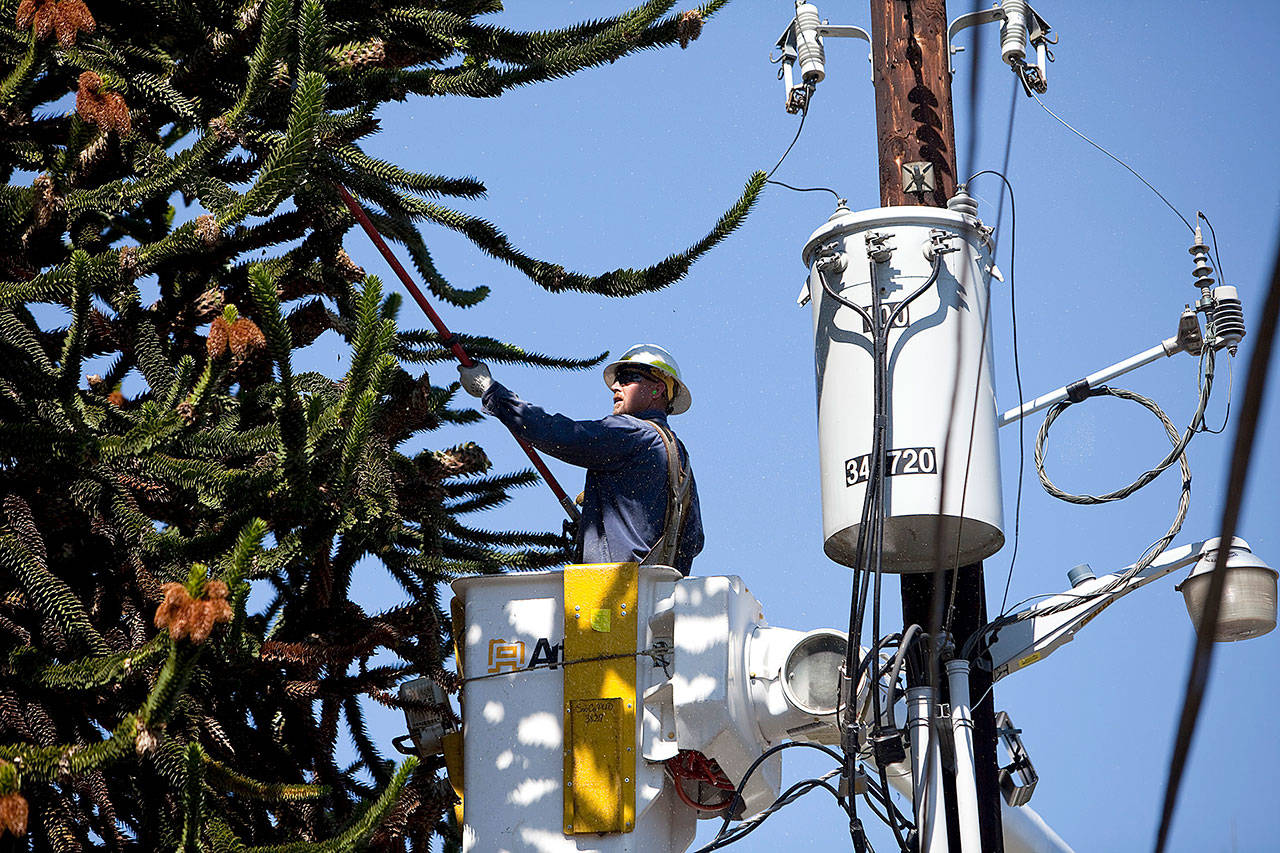The No. 1 priority for our customers is that we safely and responsibly keep the lights on. There’s nothing more important to them than being able to flip the switch and see their home light up so they can make life happen.
There are many aspects to reliability. The PUD invests in new equipment to retire aging transformers, poles and wires, and studies new technologies to help reduce outage times and frequency. But the most crucial aspect of reliable electrical service is performed by our Vegetation Management team.
Each year, the PUD’s team of arborists and tree trimmers inspect an average of 550 miles of the more than 3,700 miles of overhead powerlines in Snohomish County and on Camano Island. That includes providing line clearance from troublesome trees and limbs that could one day bring down lines or poles, and contacting home and property owners about limbs too close to lines or dead or dying trees.
It’s a lot of work, but considering that half of PUD’s outages are caused by trees or limbs, it’s work that pays off handsomely.
Along with proactive tree trimming, the team works to educate customers on smart planting. PUD Vegetation Management Superintendent Mike Munsterman refers to it as planting the right trees and plants in the right place.
Spring is a great time to beautify a yard with a new tree or bush. Trees and brush brighten our yards and communities, but when they mature and grow into or near power lines, customers are likely to get a knock on the door from one of our arborists.
Many of these issues can be avoided with better planning. Munsterman, who has been advising PUD customers for 25 years, encourages people thinking of planting trees or bushes in the yard to look ahead 10 to 20 years and try to envision where it will be in respect to power lines and padmount transformers — those large green boxes that house important electrical equipment.
Tips include planting large, tall trees far from overhead power lines and keeping bushes at least 3 feet from padmount transformers. If the ideal planting spot is under power lines, it’s best to plant smaller deciduous shrubs or fruit trees that reach a maximum height of 25 feet. Rather than an oak tree or sequoia, pick out a smaller option that is more manageable, like a Japanese maple, serviceberry or flowering cherry.
Also, consider drought-tolerant plants, which reduce your yard’s watering needs during the drier summer months. There are many options, including the Western sword fern, Oregon grape and Evergreen huckleberries. These plants are easy to care for and offer color during the warm summer months.
Along with helping keep the lights on, wise tree planting also protects street and sidewalk visibility and clearance, and prevents damage to pavement, sewers and buildings.
A good resource for smart planting is the PUD’s Tree Book, a tree selection guide for planting near power lines. In collaboration with Evergreen Arboretum & Garden in Everett, the PUD’s Tree Book offers planting tips, tree care and additional resources to help property owners pick the right tree or plant for the right place.
To find the PUD’s Tree Book or for more information on smart planting, visit www.snopud.com/trees.
Talk to us
> Give us your news tips.
> Send us a letter to the editor.
> More Herald contact information.

























